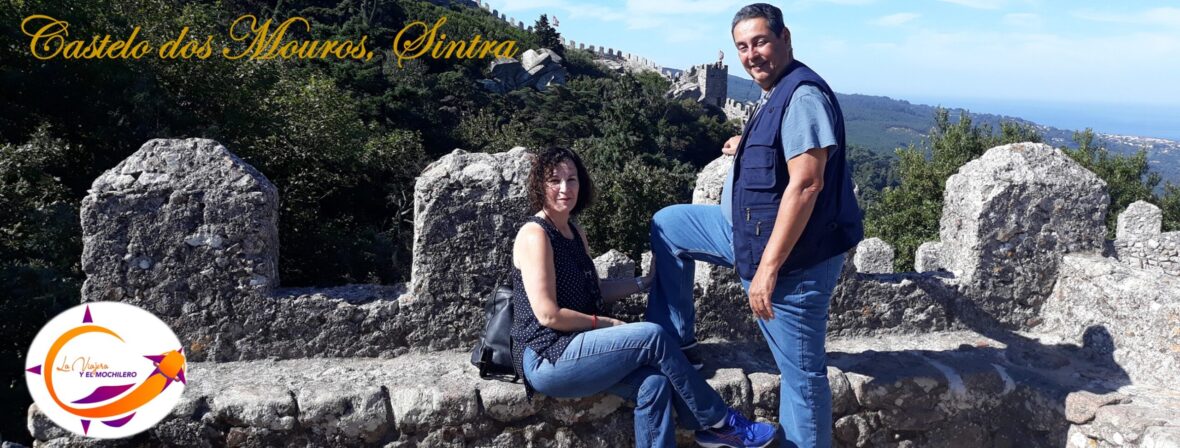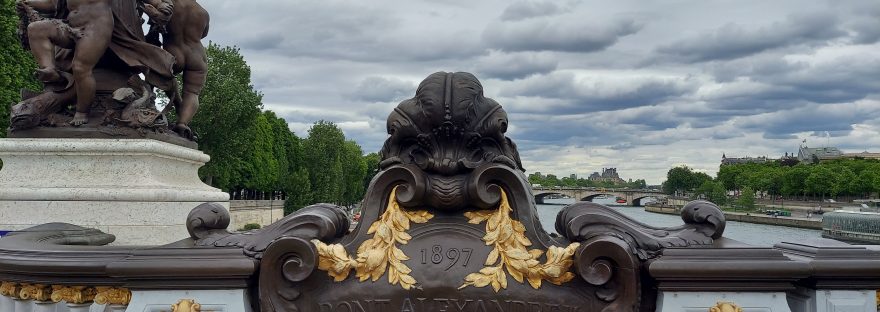One of the most visited and emblematic bridges in Paris is the “Pont Alexandre III”. It was inaugurated by Émile Loubet, seventh president of the French Republic during the Third Republic, on April 14, 1900 on the occasion of the Paris International Expo. In 1925, the bridge was part of the Exposition “des Arts Décoratifs” of Paris and fifty years later, in 1975, the Pont Alexandre III was declared a French Historical Monument. By 1999, it was included in the delimitation of the Seine riverbanks in Paris, declared a World Heritage Site by UNESCO.
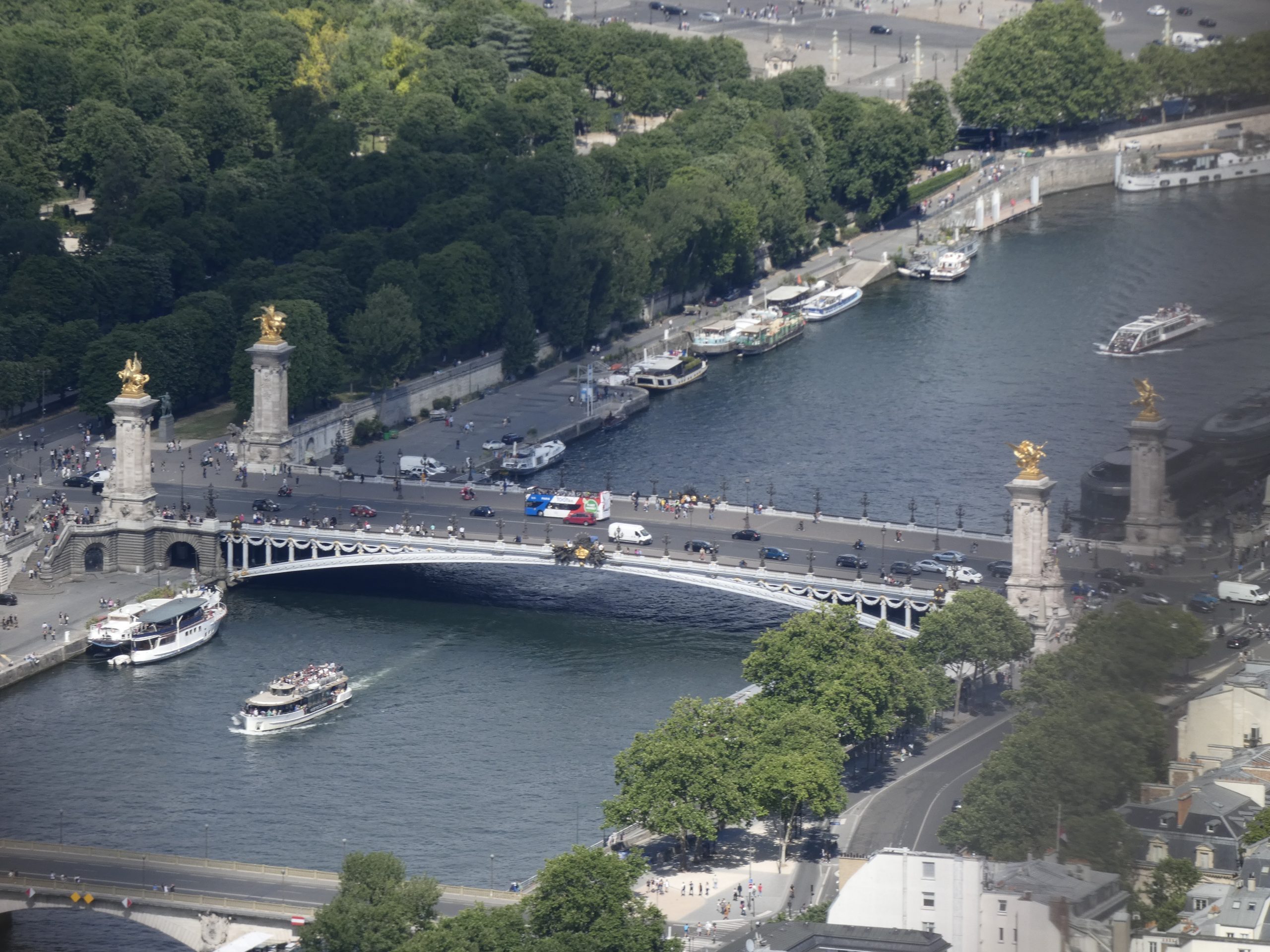
It is one of the longest bridges in the city, in this image we observe it from the Eiffel Tower. It is located between the VII and VIII arrondissement of Paris. Its style is typical of the Beaux Arts of the Third French Republic. This style within the Parisian architecture refers to the classical academic style, which was taught precisely at the” École des Beaux Arts” in Paris.
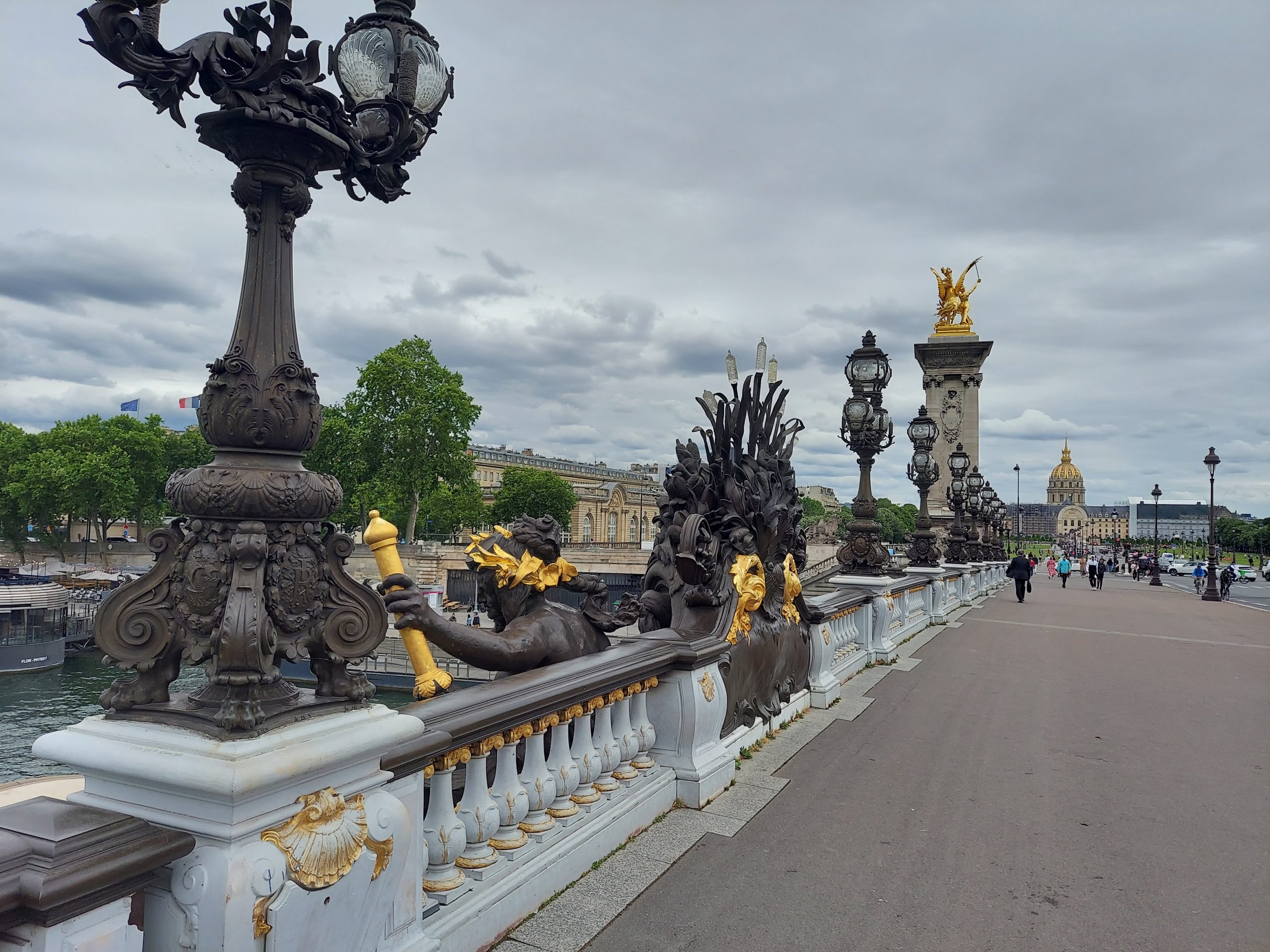
A relevant fact is that the Alexander III Bridge is one of the first prefabricated structures in the world, since its parts were cast and forged in “Le Creusot”, in the Burgundy region. From there, all the parts that make up the bridge were transported to Paris, where they were placed by means of an immense crane on the Seine River. The architects respected the orders given so that the construction of the bridge would comply with several factors, for example, not to affect the view of the Invalides and the Champs Elysées. In addition, the width of the bridge should be proportional to the width of the Avenue Winston Churchill and there should not be a large number of arches that would hinder the navigation of the river.
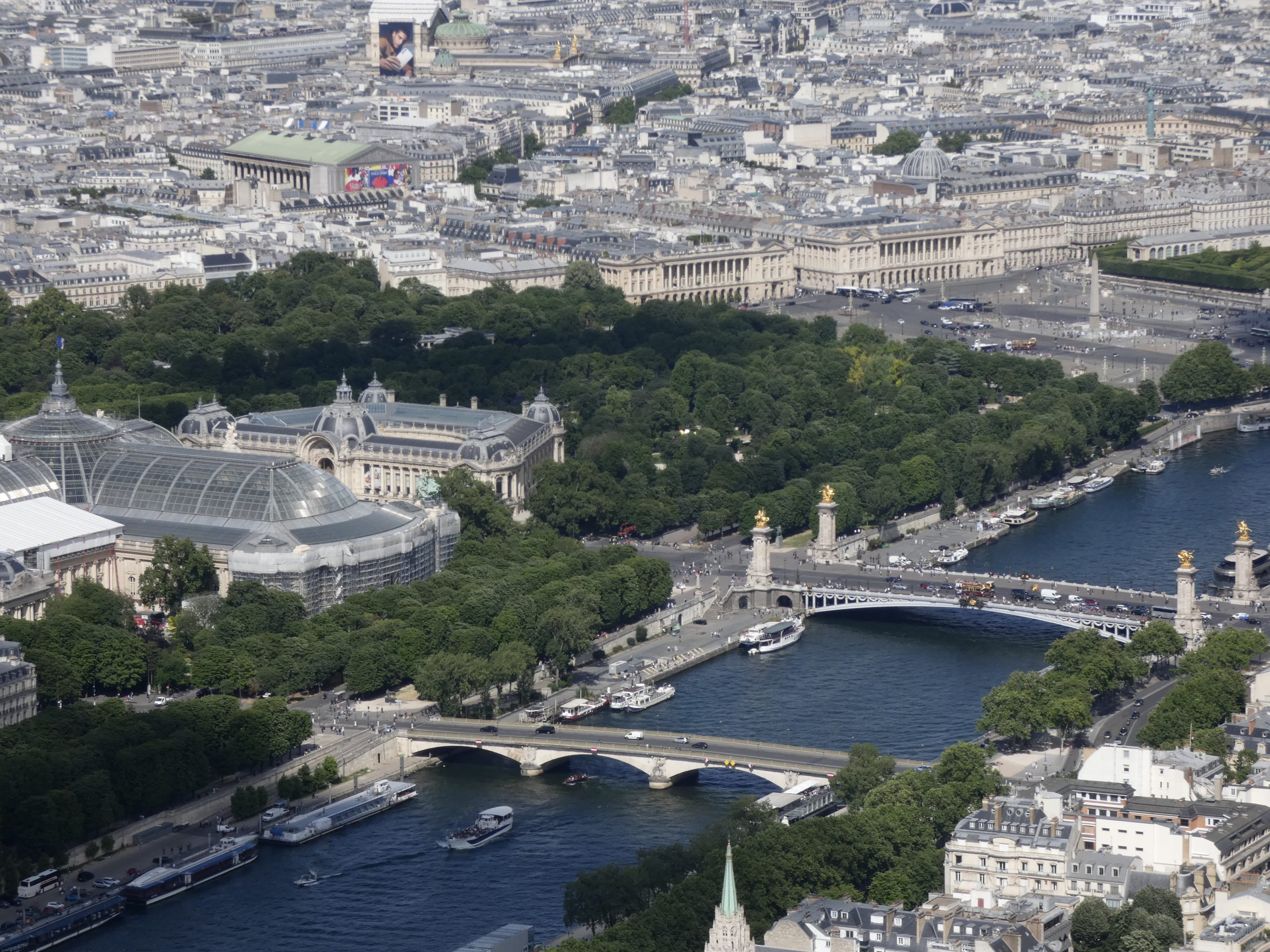
Thus it was that the Pont Alexandre III became an exponent of late 19th century French architecture and a symbol of the “Belle Époque”. It has a width of 40 meters and a single arch, 109 meters long, over the Seine, linking the Invalides, on one side of the Seine, with the Grand and the Petit Palais on the other side.
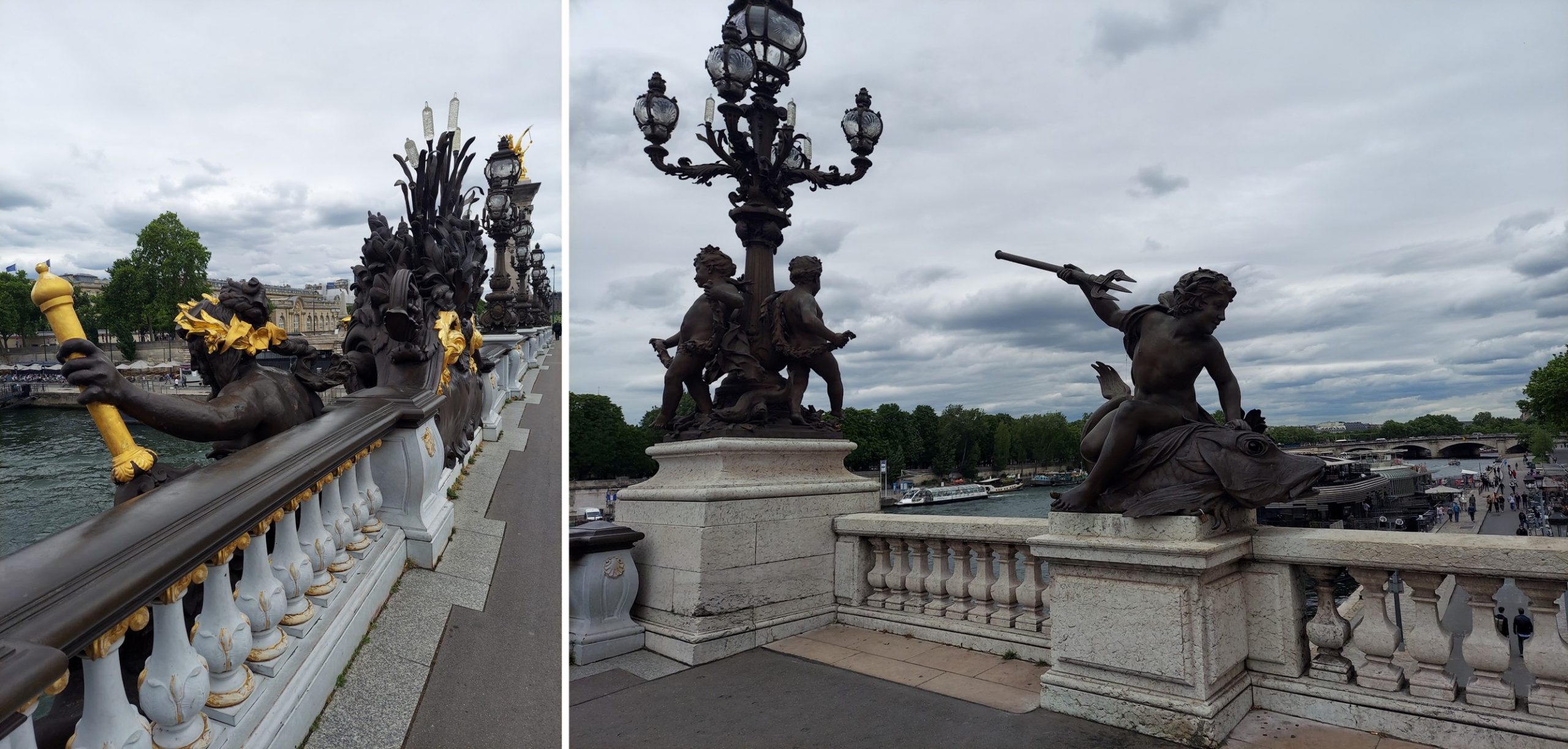
The abundant decoration that we observe along the bridge, has the function of serving as a counterweight. The garlands of shells and marine flora suspended under the cornice give balance to the whole.
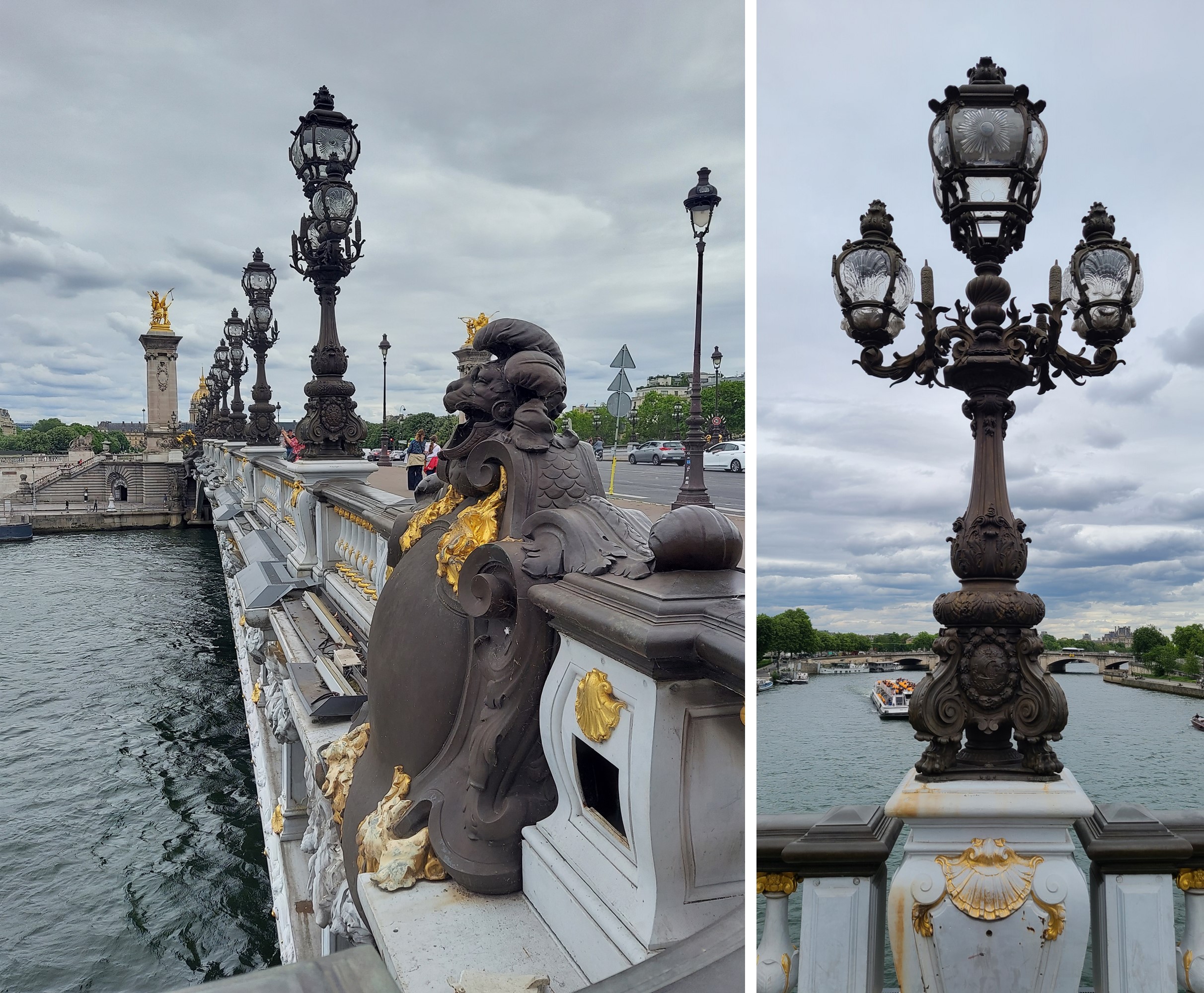
Thirty-two bronze lanterns located on the railings illuminate the Alexander III Bridge. Although, it is the four lanterns at the ends of the bridge that are the most ornate.
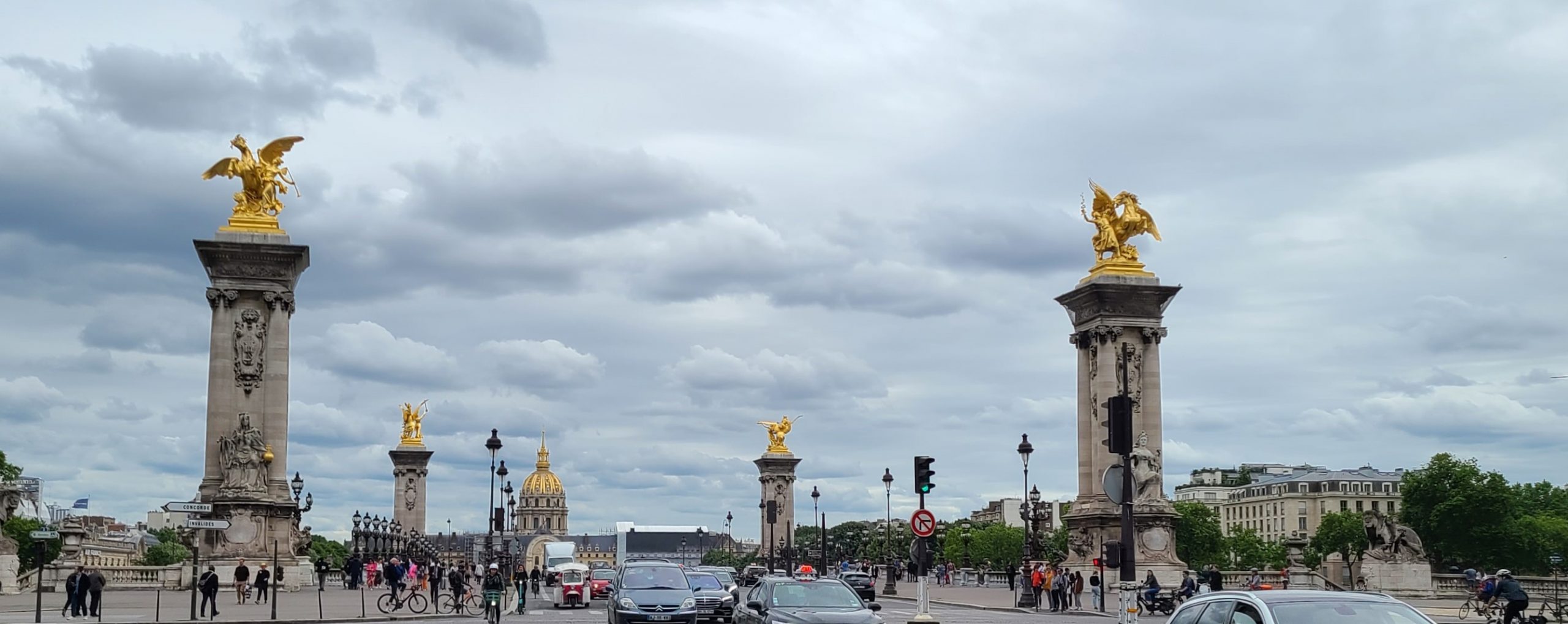
The ends of the bridge are decorated with four monumental 17 meter high pairons with gilded bronze statues of Pegasos at the top. These sculptures stand on their two hind legs and symbolize the success of the arts, sciences, commerce and industry.
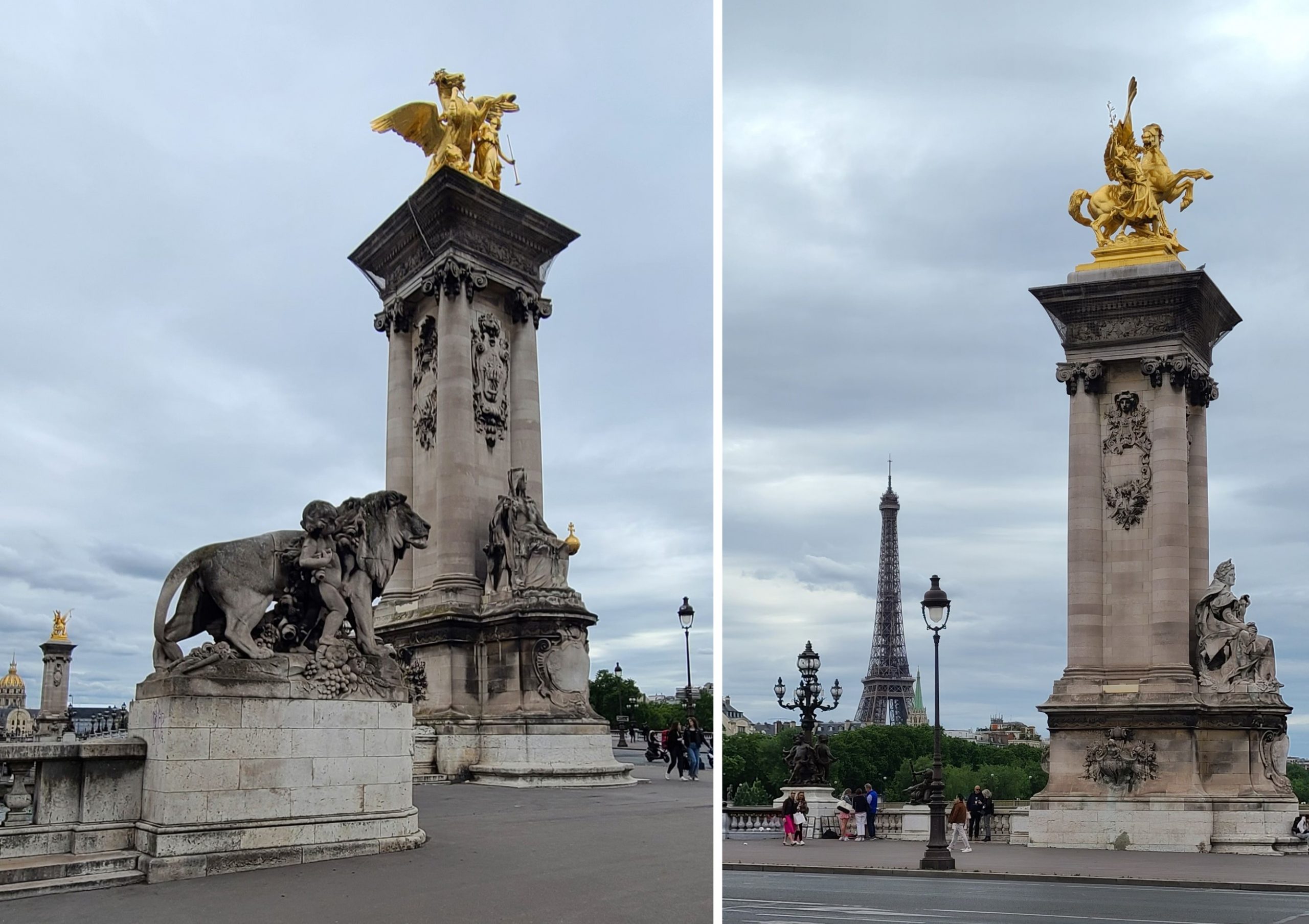
At the base of each pairon are two statues representing “Charlemagne’s France”, “Contemporary France”, “Louis XIV’s France” and “Renaissance France”. We can also find four statues of lions.
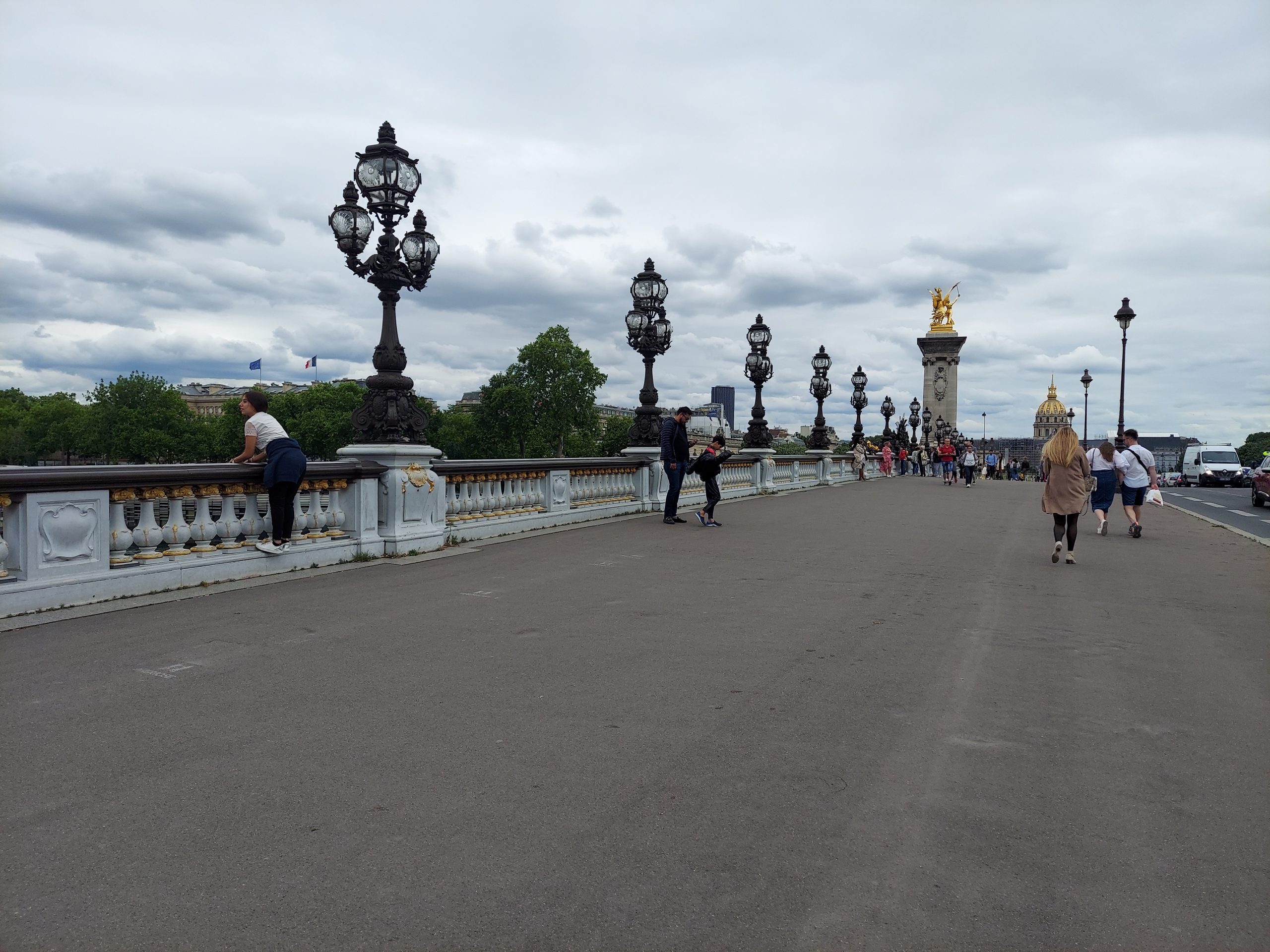
Without a doubt, we can say that the Alexander III Bridge is the most beautiful, curious and romantic bridge we have visited. The panoramic views it offers of the Seine River, as well as of the Eiffel Tower, are a great experience to live whether it be day or night.

Resources:
https://es.parisinfo.com/transportes/73135/Pont-Alexandre-III
https://es.wikipedia.org/wiki/Puente_Alejandro_III
